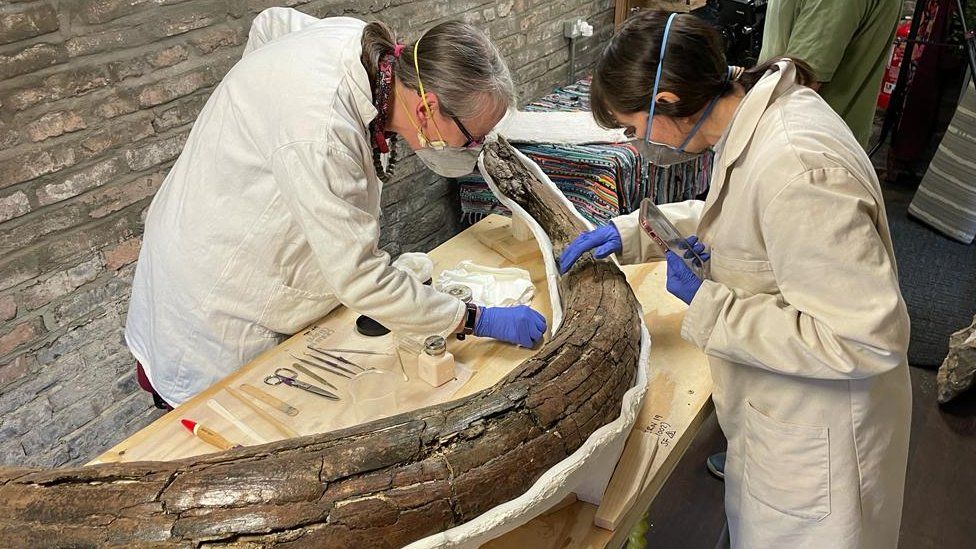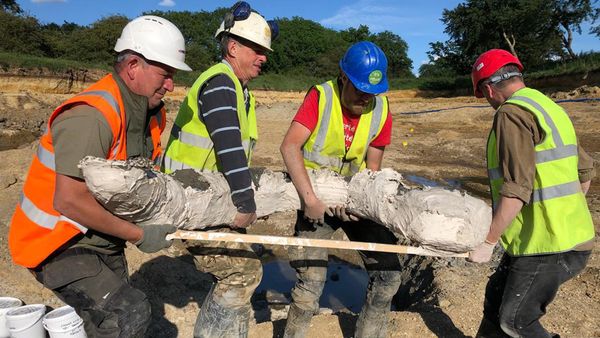Recently, an extraordinary discovery about the Ice Age was made in the United Kingdom. A team of archaeologists unearthed an ancient mammoth “graveyard,” containing the remains of at least five mammoths, along with stone tools crafted by Neanderthals. Announced on Sunday, this discovery is considered one of the most significant of its kind in Ice Age research.
A Discovery Full of Mysteries
This remarkable find was made at a quarry in Swindon, located about 90 kilometers west of London, by the archaeological team from DigVentures. During the 2019 and 2021 excavation seasons, the team uncovered the skeletons of five woolly mammoths, including two adults, two juveniles, and one newborn. These remains date back to the MIS7 period, approximately 210,000 to 220,000 years ago, when Earth’s climate was relatively mild and warmer than other Ice Age periods.
What makes this discovery so unique is the exceptional preservation of the mammoth skeletons, providing scientists with a rare glimpse into the lives of these magnificent creatures. The site also offers a fascinating look at other extinct animals from the same period, such as moose that were twice the size of their modern-day counterparts, as well as smaller organisms like dung beetles that lived in association with the megafauna, feeding on their droppings.

Layers of Ice Age Legacy
In addition to the mammoth remains, the excavation site holds a wealth of other Ice Age relics. Alongside the skeletons, the team discovered stone tools made by Neanderthals, suggesting that early humans lived in and interacted with this ancient landscape. The site also contains seeds, pollen, and plant fossils, including extinct species, shedding light on the biodiversity of the region during that era. This treasure trove helps paint a vivid picture of an Ice Age ecosystem, where gigantic animals roamed and unique plants flourished in a cold and harsh world.

Big Questions Raised
This discovery not only provides valuable data about extinct species but also raises significant questions about how humans and animals coexisted in such a challenging environment. The finding of Neanderthal stone tools at the site indicates the presence and survival of early humans alongside large wild animals. It offers a glimpse into the ways humans interacted with these creatures, hunted, and used resources in their daily lives.
Furthermore, the preservation of mammoth skeletons and related artifacts provides a rare opportunity for scientists to reconstruct in detail the environments and factors that influenced the lives of these giant creatures. The story of Ice Age megafauna is no longer just a collection of ancient records but is brought to life through these remarkable archaeological remains.

The Importance of the Discovery
This discovery offers profound scientific value, not only unraveling many mysteries of the Ice Age but also opening new avenues of research into life and interactions between humans and nature. The unearthing of mammoth remains alongside Neanderthal tools is not only a testament to the distant past but also a crucial clue to understanding human development and the relationship between people and the environment.

Conclusion
With its immense scientific significance, the discovery of the 200,000-year-old mammoth graveyard in the UK marks a major step forward in Ice Age research. It not only offers insights into our distant past but also helps us understand the changes in climate, the environment, and the creatures that inhabited this ancient world, offering valuable lessons for the future.
